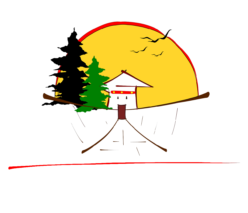When sentiment clashes with common sense, something’s got to give
Environment : Part III
September, 2009 – Bhutan’s verdant forests, whose coverage the Constitution mandates should not be less than 60 percent for all time to come, is under tremendous pressure from the soaring demand for prayer flags that dot the country’s hills and valleys.
Although no studies have been carried out on the impact on the forest by felling trees for flag posts, statistics with the department of forest show that thousands of trees are felled every year to meet this demand.Between June 2007 to 2008, Bhutan felled 60,178 trees, or about 165 trees every day, to meet the demand for poles, of which demand for flag posts is the highest. This excludes the 550 trees felled daily for other uses. Continue reading The prayer flag and the forest






